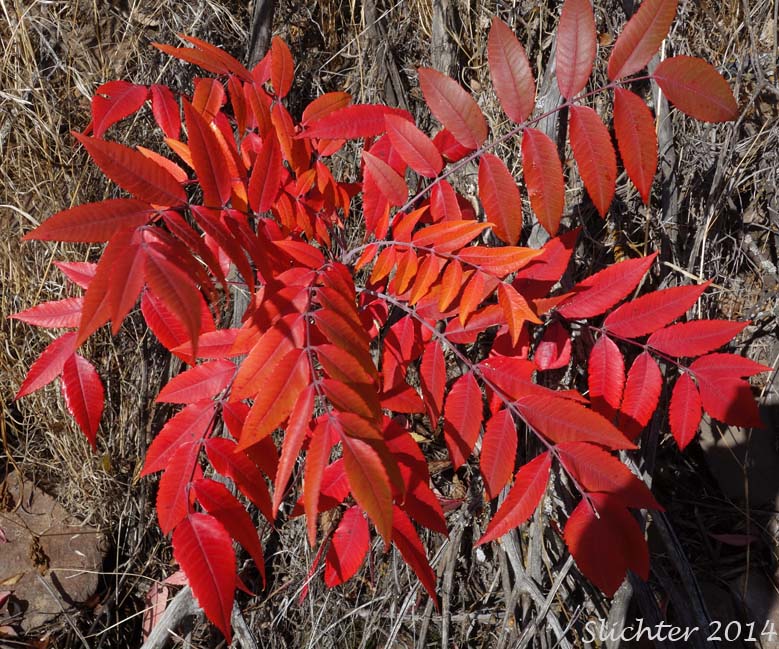
Smooth sumac is an attractive shrub to small tree which commonly forms dense thickets due to the spreading lateral roots which send up new plants wherever they near the surface of the ground. The stems are erect and sparingly branched. They have a reddish-brown pubescence on younger twigs, while older stems are stout and grayish-brown to mottled. The leaves are pinnately compound with 7-29 sessile leaflets with serrate margins. Individual leaflets are lanceolate in shape and range from 4-8 cm long and 1-2.5 cm wide. They are dark green above and pale green below, while the fall foliage is a deep red.. They exude a milky sap when crushed.
The inflorescence is a large, dense panicle found at the terminus of the stems. The inflorescence averages about 5-16 cm long. The flowers contain 5 petals, each of which is 3-3.5 mm long while the 5 sepals are about one-half as long. The fruit are broadly elliptic or elliptic-ovate in shape, are roughly 4-5 mm long and covered with short, red, glandular hairs.
Smooth sumac is widely used as an ornamental shrub due to its bright red leaves during the fall. However, it should be placed where it will not cause problems with other plants as it spreads rapidly via tough roots which run an inch or two beneath the surface. Where there was one sumac, there will soon be dozens of sumacs!
The fruits persist well into the winter and are useful as food for chipmunks, magpies, quail, flickers, wrens and thrushes. The bark is a food source for rabbits and the foliage and twigs are browsed by deer. The berries were eaten raw or soaked in water for a lemon-flavored drink. Native Americans smoked the leaves as a type of "tobacco". Some Native Americans used moistened leaves on rashes and raw leaves were eaten in large quantities as a laxative. When steeped in water as a tea, the leaves were useful as a cold treatment.
Smooth sumac is a plant of open, fairly dry places in the lowlands and foothills.
Smooth sumac may be found across much of North America. It may be found from British Columbia south through the Pacific Northwest to eastern Nevada to northern Mexico, and east to Georgia, New England and north into southern Quebec.
In the Columbia River Gorge, it may be found east of The Dalles, OR between the elevations of 100'-4000'.